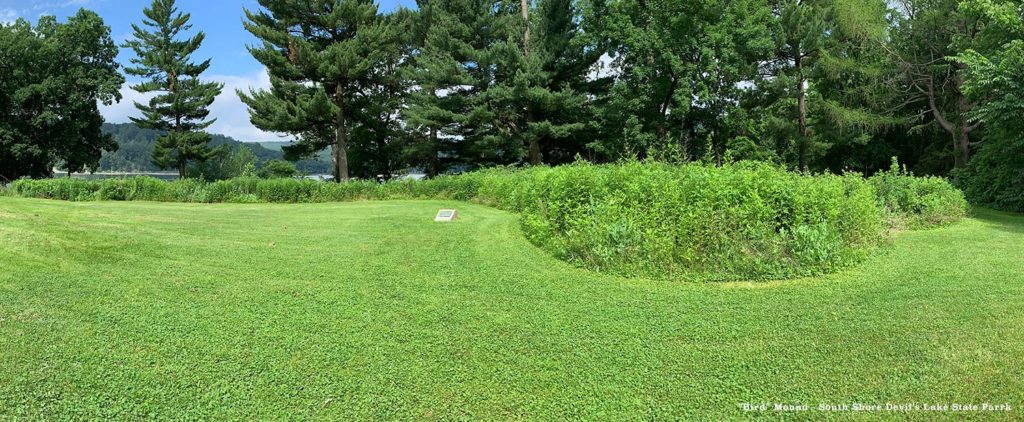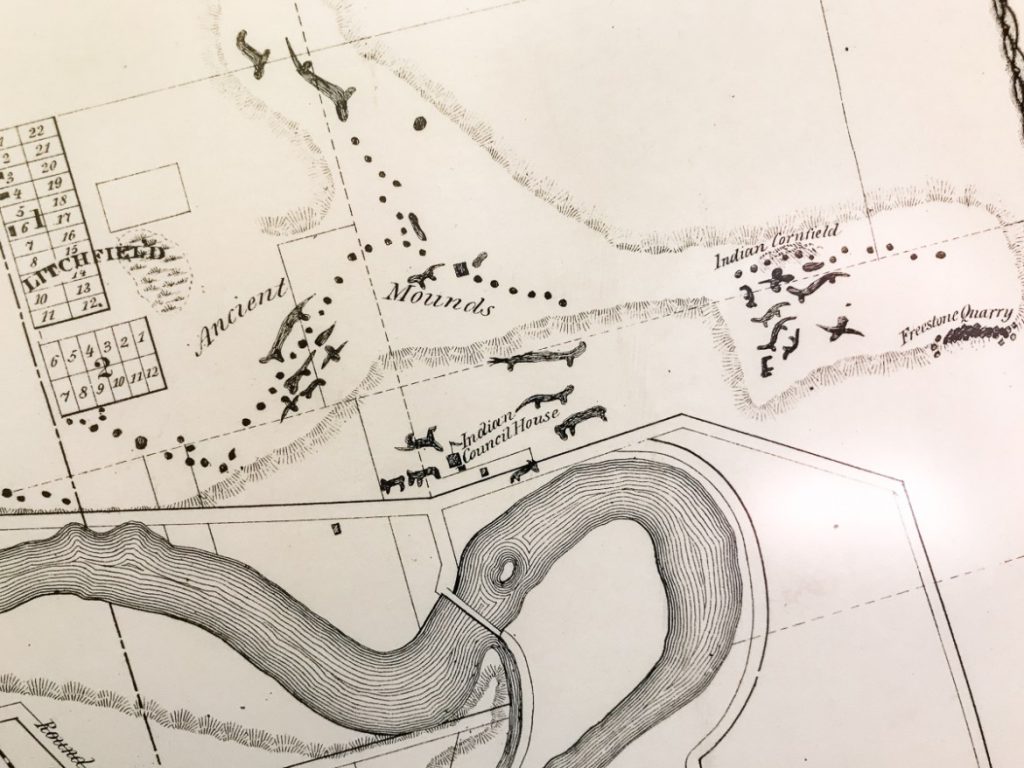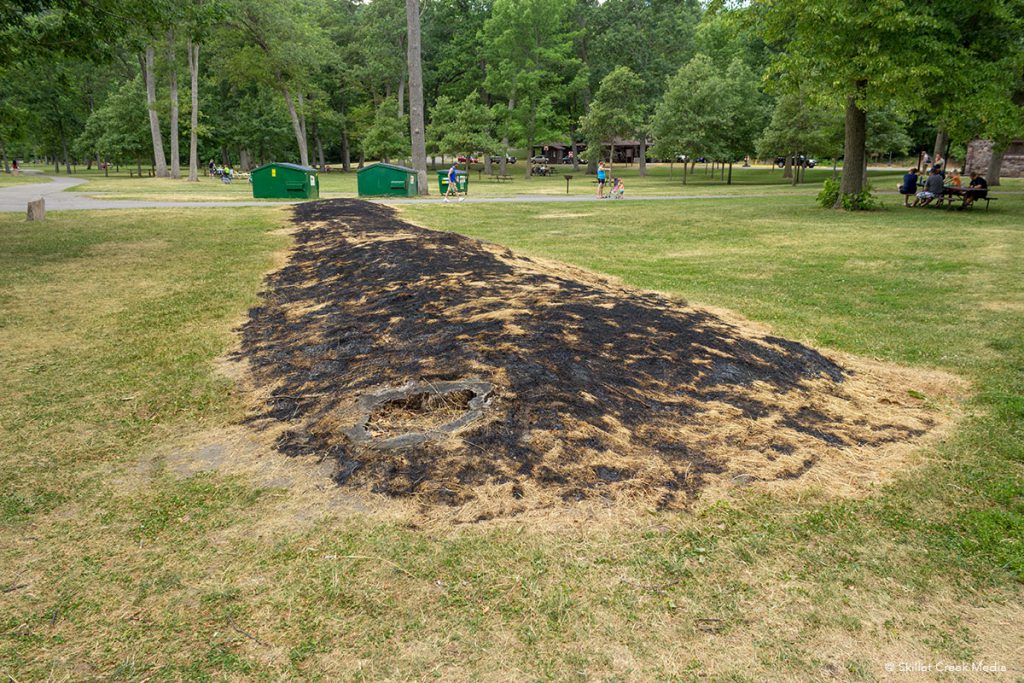
The effigy mounds found in Devil’s Lake State Park hold deep cultural and spiritual significance for the Ho-Chunk community and 19 other culturally associated American Indian nations. These burial mounds are sacred spaces that hold great importance for reflection, prayer, and connecting with family and community. It is important to respect and honor the traditions and beliefs of the tribes that created these mounds. Please refrain from walking on the mounds and treat them with the reverence they deserve.
About Effigy Mounds
From Effigy Mounds National Monument: “The Late Woodland Period (1400-750 B.P.) along the Upper Mississippi River and extending east to Lake Michigan is associated with the culture known today as the Effigy Moundbuilders. The construction of effigy mounds was a regional cultural phenomenon. Mounds of earth in the shapes of birds, bear, deer, bison, lynx, turtle, panther or water spirit are the most common images. Like earlier groups, the Effigy Moundbuilders continued to build conical mounds for burial purposes, but their burial sites lacked the trade goods of the preceding Middle Woodland Culture. The Effigy Moundbuilders also built linear or long rectangular mounds that were used for ceremonial purposes that remain a mystery. Some archeologists believe they were built to mark celestial events or seasonal observances. Others speculate they were constructed as territorial markers or as boundaries between groups. The animal-shaped mounds remain the symbol of the Effigy Mounds Culture.”
Mounds in Sauk County

“We were rather irked by the large number of Indian mounds we had to plow down. There must have been at least 25 on our land….Some were shaped like animals and some like birds, and all were from three to five feet high…”
– Early Sauk County Farmer
At the turn of the 20th century, Sauk County had many mound sites, but unfortunately, many were destroyed as settlers built homes and farmed the land. It’s heartbreaking to acknowledge that many of these early farmers saw the mounds as a nuisance and worked hard to plow them under, which is one of the reasons why it’s challenging to determine their exact purpose. Today, only a few of these sacred sites remain, and unfortunately, there are still people who do not recognize their value and importance and are not committed to protecting them. Here in our part of Wisconsin, Man Mound (Designated as a National Landmark in 2016) north of Baraboo is now protected by a small park and there are also a few large mounds near Wisconsin Dells. Devil’s Lake is home to the largest concentration of effigy mounds in Sauk County.
Effigy Mounds at Devil’s Lake
In the park itself, many of the mounds were damaged and destroyed by the building of motels, cabins, and the like, as Devil’s Lake became a popular tourist destination. The mounds that survived were between buildings and on property lines and were luckily left largely undisturbed.

Over time, interest in the mounds began to really take hold and in the 1920s mapping and study of the mounds began in earnest. As interest in the mounds increased, preservation began to become a priority. Sadly, by then, time and man had eroded many of the mounds almost beyond recognition.

It was only through survey records and historical examples that these mounds within the park could be restored to what is believed to be closest to their original appearance. Today, the mounds at Devil’s Lake State Park are covered in a mix of flowers and grasses to protect them from further erosion and prevent people from walking on them. Even this has been controversial, as they are not always well-maintained and you’ll often see paths where people walk over the mounds regardless.
We urge you to learn more about the mounds and the native history of the park. Please treat the mounds appropriately as “sacred spaces” and respect their place in our history. To learn more, visit the Nature Center on the North Shore of the park. We think you will be amazed by the human and geological history of Devil’s Lake.
North Shore Mound Locations

South Shore Bird Mound Location

